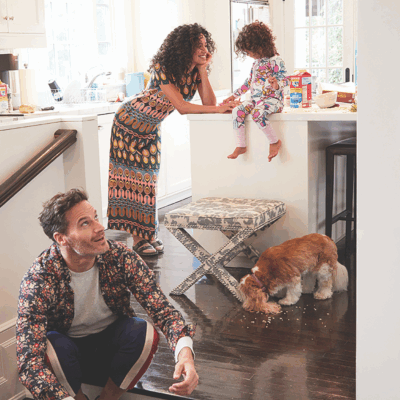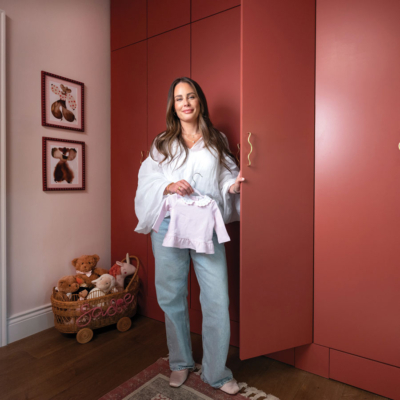Office work seems on the brink of a profound shift. JANE McDONNELL talks to women about whether working from home can go on forever, if office work will be the exception rather than the norm, and wonders will women lose ground working from home? …
Face-to-face office interactions encourage people to communicate and bond, but that is only part of their value. The seemingly inconsequential chats, the collective brainstorming and unstructured discussions that lead to great ideas and decisions, deliver some great advantages for productivity, wellbeing and, yes, equality. Many believe the coronavirus crisis and the move to working from home has sparked a setback for women and that years of progress are at risk. Women are once again filling the gaps at home and at work, putting others first and taking on more of the household tasks and childcare – (a whopping 15 additional hours per week according to a Boston Consulting report) – since the beginning of the pandemic. But what’s the real story? Will a move to a blended work/office set up benefit us or drive us all mad?
CEO of Vodafone Ireland, Anne O’Leary leads 3,000 employees, delivering a mobile network to more than two million customers. She is personally currently combining virtual working from home with some office time, a hybrid model that isn’t a million miles from the flexible working pattern that was already in place at the company. She embraces the re-imagining of the traditional working day but is looking forward to a time when face-to-face meetings can happen again. “There is a way of working that blends the best of both. People’s time is precious, the planet is precious – so it’s vital we appreciate this new opportunity is a positive way forward. But a balance is key – collaboration, belonging, learning from each other, sometimes needs a face-to-face element. I believe you get huge energy from being with people, I know I do. You can feel the vibes in a physical meeting, understand the context. I also know that being present can make challenging an idea or interrogating a plan more rigorous.”
O’Leary is the consummate team player, so gathering the team together is a two-way exercise: “You can really take on board what people are saying, but for some, remote meetings are not conducive to expressing opinions.” She is also concerned that some people don’t know when to switch off at home, going above and beyond. “We need to understand that for some people, working from home is harder; they may have challenging personal circumstances. We need to understand how to support them.”
Whatever about the pros and cons of being in the office, for many women, the rituals of the commute are beneficial too: make-up in the car, time to reflect, podcasts on the DART, hellos in the street, serve to separate home life from work. Without them, it becomes easy to lose track of the distinction between professional and personal life. Work time becomes more scattered, and leisure time less pure. As Glanbia’s Head of Employee Engagement, Shona O’Neill explains: “When you work from home, the line between work and home life becomes very blurred. It’s very easy to drift into a way of working that’s tough on the family. There were times in the beginning when I felt like I was living at work rather than working from home.”
As the remote-work revolution is starting to look inevitably permanent, many organisations are concerned that collegiality, speed and quality are sacrificed when people work from home. The act of being physically together was so highly valued by tech companies like Google, Yahoo and Slack (otherwise ideally placed to facilitate remote working) that they became known for enticements like free meals, on-site gyms and flexible working, all designed to incentivise office face time.
“When you work from home, the line between work and home life becomes very blurred. It’s very easy to drift into a way of working that’s tough on the family.”
At Accenture, “People Captain” for their Strategy and Consulting business, Tara Levins has worked with the leadership team to try and address the need for social interaction. “One of our most successful initiatives has been “Fika Fridays”. Fika is the Swedish term for coffee and cake break, but it’s really so much more than that – we get small groups to engage virtually as they would in a physical office.” Levins has always been an advocate for remote working but says that organisations need to think about creating “a sense of home” in the office. “Recent research by Accenture tells us that now, as employees demand more flexibility in their working arrangements, having an adaptable physical office space where people can come together will be vital.”
More than half of those who were employed before the pandemic are now working remotely. Many have not seen their desks for months, and perhaps are protected from the fact that when the government ends its support, there may be fewer desks to return to. “There is a danger that if working from home is adopted on a massive scale, the economy could contract as office-centric ecosystems would become non-sustainable,” according to Ibec CEO Danny McCoy. Working from home is also a situation skewed toward the privileged: for many employees who work in healthcare, retail, public transport or services, for instance, remote work is not possible. Essential workers like Vodafone’s 600-strong retail staff reported as usual for duty, says Anne O’Leary, helping the public stay in touch, work online and cope with the new normal. Glanbia’s global nutrition-supplies business continued with, as Shona O’Neill says, “a constant sprint to keep on top of public health guidance which varied country by country and state by state in the US.”
Gillian Keating, partner at Ronan Daly Jermyn law firm in Cork, works alternate days in the office/at home. “This ensures we all feel safe in the office, and we have the benefit of regular face-to-face catch ups.” Lockdown helped Keating recognise the pluses of face-to-face interaction: “We’ve learned the value of being fully present during these engagements. While our office days are super-structured; home days are more fluid but tend to extend longer into the evening. This hybrid approach works for me.”
There are some positive lessons to be learned from the country’s mass home-working experiment, with traffic down and emissions reduced. It may be that employees’ lives can become easier and better. “I can squeeze in a sea swim at lunchtime, and keep physically mentally fit and active,” says Anne O’Leary. “I get to say hello to my neighbours, I enjoy my house and I am not rushing all the time.” Shona O’Neill says that “on a good day, I time my lunch so I can eat with some of the family. Not worrying about having to be somewhere else has instilled a sense of calm.”
For those who can work from home, they will have been changed by the experience. The term work-life balance is no longer an abstract notion, now workers have a clear understanding of their needs and working preferences and are happy to articulate it. They see that business continuity can be achieved while working from home – even under difficult circumstances. But, many believe this crisis could represent a setback for women and years of progress are at risk. “As leaders, we must determine how to make the investments and mindset changes needed to put women on a new pandemic-era path to leadership and financial security,” says O’Leary.
Having cracked the logistical challenge of enabling entire workforces to do their jobs from the kitchen table, employers now face a brand new and potentially far more complex one: how to get people safely back to the office in the aftermath of a deadly pandemic. So what does the immediate future hold: “Health guidance permitting,” says Gillian Keating, “a face-to-face meeting with the entire Ronan Daly Jermyn team would be a goal for me. But, it has been a privilege to have been able to work through the last few months; on the stressful days, I remind myself of that fact.”

Photograph by Phillip Martin
Anne O’Leary, CEO, Vodafone Ireland
One hard lesson you learned during this period?
Just how difficult this period of time has been for everyone. There’s a realisation that everything won’t go back to the way it was, that we need to embrace a new future and plan our lives and our business to reflect that.
Most rewarding aspect of this new normal?
Learning that being physically in one location – in the office five days a week – is not the most productive way to manage your work environment, and that there is a way of working that blends the best of both.
How do you think we can keep our business connections strong while wholly or partially WFH?
I think it is checking in with people regularly both in a personal and business capacity. Ensuring that in a business context the customer feels connected to your company and I think the personal touch is even more important now than ever before. It’s so important to follow government guidance at the moment but I, like many others, are looking forward to getting back to a time where face-to-face meetings can happen again and we can fully embrace a hybrid model of working from home and from the office.
WFH real estate?
I have a home office set up in a spare bedroom in the attic which is separate from the rest of the house, is quiet and has a nice view and of course great Vodafone connectivity.
What helps you maintain perspective?
Exercise really helps me focus on what is important and is also a great stress reliever. I love spending time with my young nephews to lift my spirits or catching up with my girlfriends to see how they are doing.
A goal for 2020?
To keep updating my gratitude journal. To try and lead with hope and optimism – and really to be the best leader I can be during these difficult times.
LOVETHEGLOSS.IE?
Sign up to our MAILING LIST now for a roundup of the latest fashion, beauty, interiors and entertaining news from THE GLOSS MAGAZINE’s daily dispatches.










